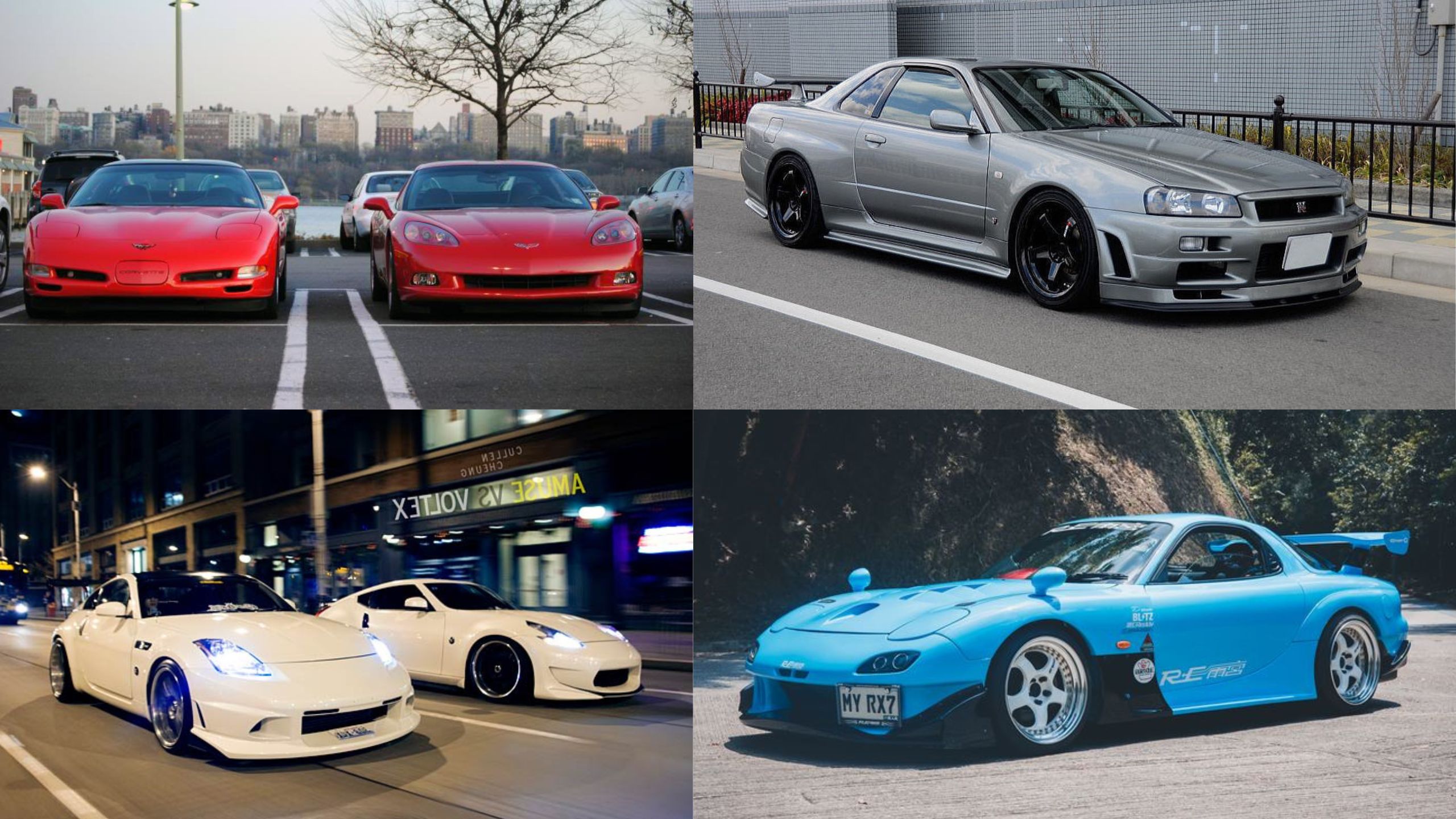When it comes to the art of drifting, not all cars are created equal. Born in the winding mountain roads of Japan in the 1970s, drifting has evolved from an underground racing technique into a globally recognized motorsport.
The perfect drift car combines several crucial elements: a powerful engine, rear wheel drive architecture, excellent weight distribution, and a chassis that’s both responsive and forgiving.
While modern purpose-built drift cars push the boundaries of engineering, many of the most legendary drift machines started as humble production vehicles that found their true calling in the hands of skilled drivers.
From the iconic Nissan Silvia series to the tire-shredding muscle of American classics, these vehicles have earned their places in drift history through a combination of performance potential, aftermarket support, and raw charisma.
Some became legends on the touge (mountain passes) of Japan, while others dominated professional competitions worldwide.
Each car on this list represents not just a vehicle, but a chapter in the evolution of drifting culture, inspiring generations of enthusiasts and helping shape the sport into what it is today.
1. Nissan Silvia S13/180SX
The Nissan Silvia S13 and its hatchback variant, the 180SX, represent the quintessential drift car platform.
Introduced in 1988, this lightweight sports car epitomized the golden age of Japanese performance vehicles.
The S13’s perfect balance of power, weight, and chassis dynamics made it an instant favorite among drifting pioneers.
Its legendary SR20DET engine, featuring a 2.0-liter turbocharged four-cylinder powerplant, delivered a robust and tunable performance that could be easily modified to produce anywhere from 205 to well over 500 horsepower.
What truly set the S13 apart was its nearly perfect weight distribution and predictable handling characteristics.
The MacPherson strut front suspension and multilink rear setup provided an ideal foundation for drift modifications.
The car’s relatively long wheelbase offered excellent stability during high-speed drifts, while its manageable size made it agile enough for technical courses.
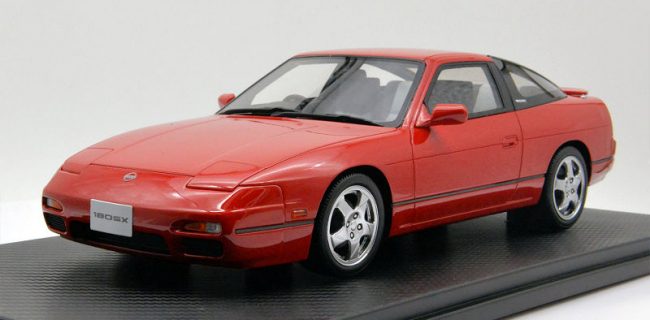
The vast aftermarket support developed for the S13 platform allowed enthusiasts to transform these vehicles into dedicated drift machines with endless customization possibilities.
The S13’s influence on drift culture cannot be overstated. It became the weapon of choice for countless professional drivers, including drift legend Keiichi Tsuchiya, who helped popularize the platform through his legendary Hot Version videos.
Even today, clean examples of the S13 are highly sought after, commanding premium prices in the collector market.
Its timeless design, combined with its proven performance capabilities, has cemented its status as one of the most iconic drift cars ever created.
2. Toyota AE86 Corolla
The Toyota AE86 Corolla, immortalized by the manga and anime series “Initial D,” represents the pure essence of drifting.
Despite its humble origins as an economy car, the AE86 (particularly the Trueno and Levin variants) became legendary for its perfect balance of lightweight construction, rear wheel drive layout, and responsive 4A-GE naturally aspirated engine.
Weighing just around 2,300 pounds, the AE86 exemplified the “less is more” philosophy that made it a favorite among grassroots drifters.
The 4A-GE engine, though modest in power output at 128 horsepower, provided linear power delivery and a high-revving character that made it ideal for maintaining controlled slides.
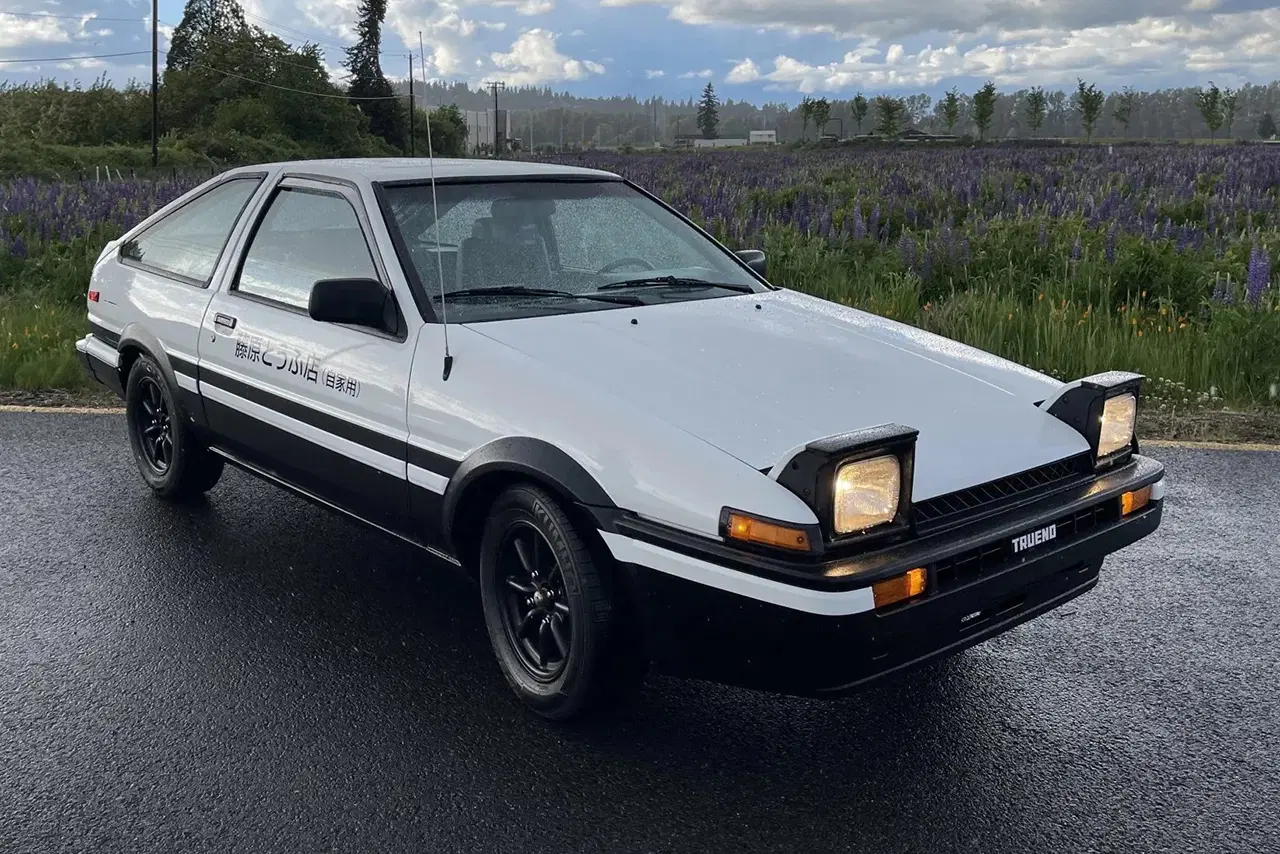
The car’s live rear axle, often considered a disadvantage in modern sports cars, actually contributed to its predictable drifting behavior.
The simple suspension setup, combined with the car’s excellent weight distribution, allowed drivers to feel exactly what the car was doing at all times.
What truly made the AE86 special was its accessibility and reliability. These cars were affordable when new and remained relatively inexpensive for years, allowing a generation of drift enthusiasts to learn and perfect their craft.
The robust engineering meant that these cars could withstand the abuse of regular drift sessions while remaining reliable daily drivers.
Even today, the AE86 commands respect in the drifting community, with well preserved examples becoming increasingly valuable collectors’ items.
3. Mazda RX-7 FD3S
The Mazda RX-7 FD3S represents the perfect marriage of exotic sports car design and drift-ready dynamics.
Launched in 1992, the third-generation RX-7 featured a unique twin-turbocharged 13B-REW rotary engine, producing 255 horsepower in stock form.
This distinctive powerplant, combined with the car’s lightweight construction and perfect 50:50 weight distribution, created a platform that excelled in both grip and drift applications.
The FD’s sequential twin-turbo system delivered smooth power delivery, ideal for maintaining controlled slides, while the rotary engine’s high-revving nature and compact size contributed to the car’s low center of gravity.
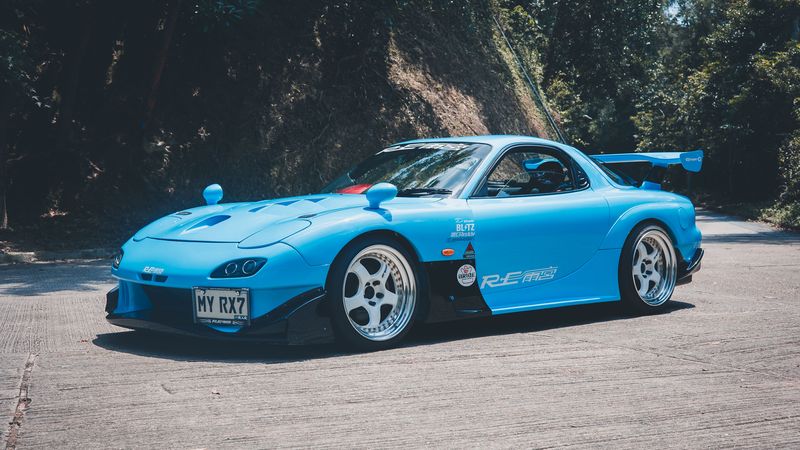
The sophisticated multilink suspension system provided exceptional handling characteristics that could be fine-tuned for drifting.
The car’s sleek aerodynamic design not only looked stunning but also helped manage airflow during high-speed drifting maneuvers.
Perhaps most importantly, the RX-7 FD3S offered incredible tuning potential. The rotary engine could be modified to produce massive power outputs, with some drift-spec examples pushing beyond 700 horsepower.
While the complexity of the rotary engine and turbo system required more maintenance than conventional powerplants, the unique character and performance potential of the FD3S made it a favorite among serious drift enthusiasts and professionals alike.
4. Nissan Skyline R32/R33/R34
While primarily known for their circuit racing prowess, the Nissan Skyline series, particularly the R32, R33, and R34 generations, proved themselves equally capable as drift platforms.
Despite their sophisticated all wheel drive systems, these cars could be converted to rear-wheel drive, unleashing the full potential of their legendary RB-series engines.
The RB26DETT, in particular, became famous for its incredible tuning potential and bulletproof reliability.
The Skyline’s robust chassis and sophisticated multilink suspension system provided an excellent foundation for drift builds.
Even in stock form, these cars offered superior handling characteristics that could be enhanced through modification.
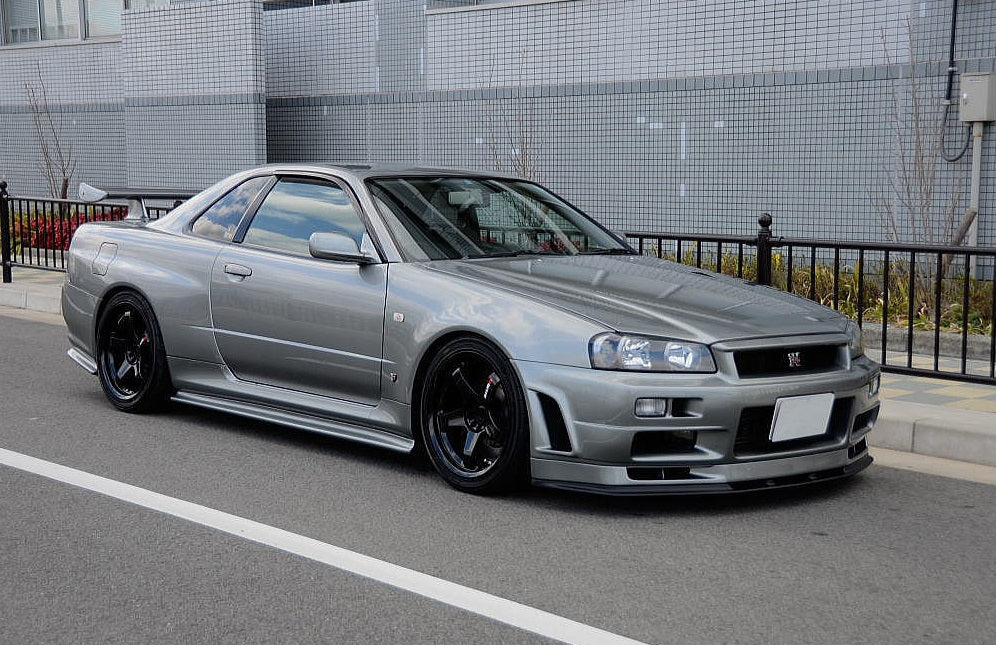
The long wheelbase and wide track width contributed to stability during high-speed drifts, while the well-balanced chassis made them predictable at the limit.
What set the Skyline series apart was their combination of technological sophistication and raw performance potential.
The RB engine family could be tuned to produce enormous power figures while maintaining reliability, and the cars’ advanced aerodynamics helped manage airflow during aggressive drifting maneuvers.
The cultural impact of these vehicles, enhanced by their prominence in video games and movies, has made them highly sought after by collectors and drift enthusiasts alike.
Also Read: 10 SUVs That Offer the Best Bang for Your Buck in Features
5. BMW E30/E36/E46
The BMW 3-Series, particularly the E30, E36, and E46 generations, brought European flair to the drift scene.
These cars combined sophisticated engineering with driver-focused dynamics, making them excellent platforms for drift conversion.
The straight-six engines found in these models, especially the M3 variants, provided smooth power delivery and excellent tuning potential.
What made these BMWs particularly special was their near-perfect weight distribution and responsive chassis dynamics.
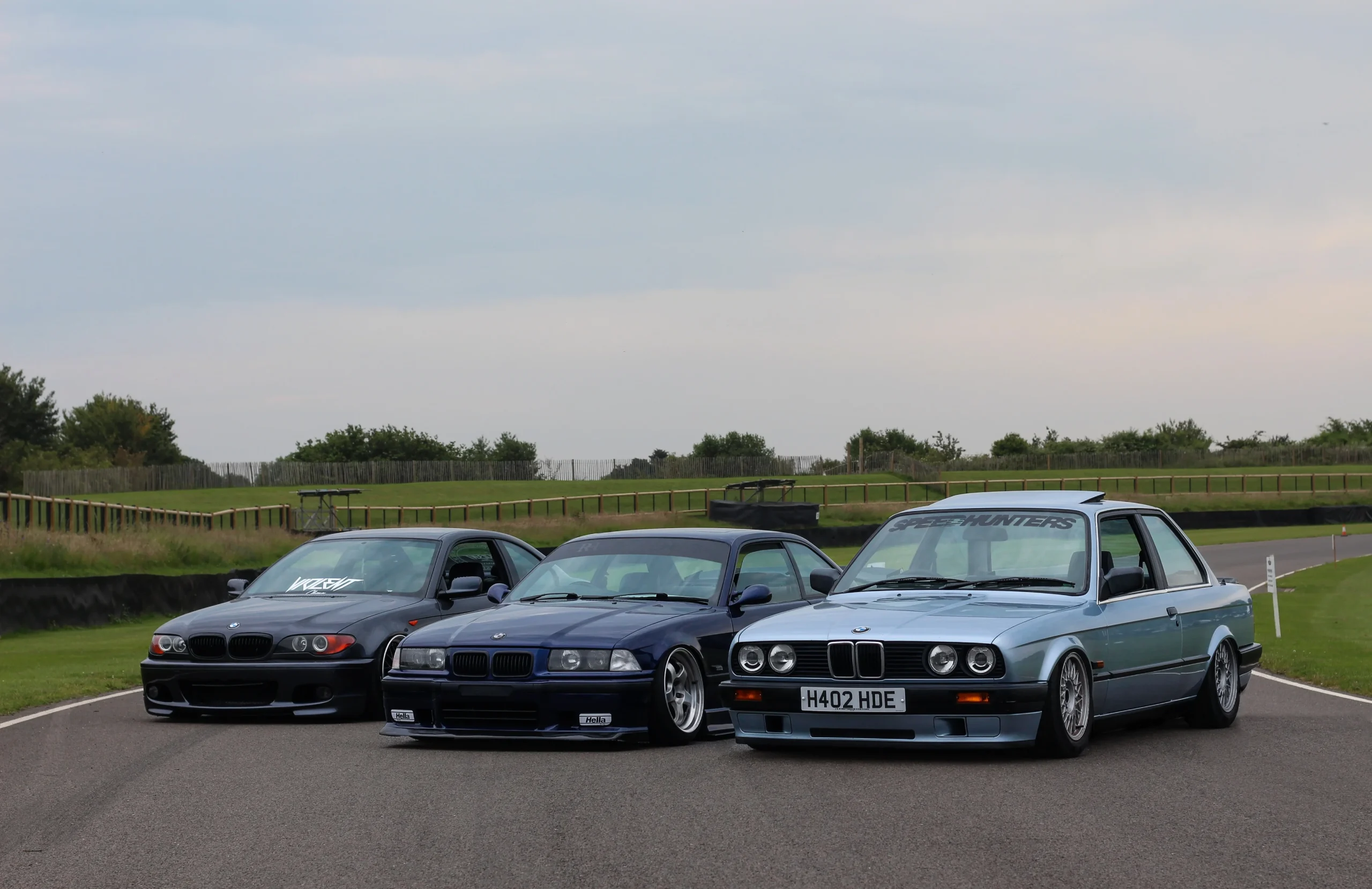
The MacPherson strut front suspension and multilink rear setup offered excellent handling characteristics that could be easily modified for drift purposes.
The cars’ rigid chassis and strong aftermarket support allowed for extensive modifications while maintaining reliability.
The E36 and E46 generations, in particular, gained popularity in professional drifting circuits due to their combination of power, balance, and style.
The M3 variants, with their high-revving S50/S52/S54 engines, provided an excellent starting point for drift builds.
Even the non-M models, with their robust straight-six engines, proved capable of handling significant power increases through forced induction or engine swaps.
6. Toyota Supra MK4
The fourth-generation Toyota Supra, equipped with the legendary 2JZ-GTE engine, represents one of the most potent drift platforms ever created.
The twin-turbocharged inline-six engine became famous for its ability to handle massive power increases on stock internals, with some builds achieving over 1,000 horsepower without requiring extensive engine modifications.
Beyond its incredible engine, the MK4 Supra offered a sophisticated chassis and suspension system that could be optimized for drift applications.
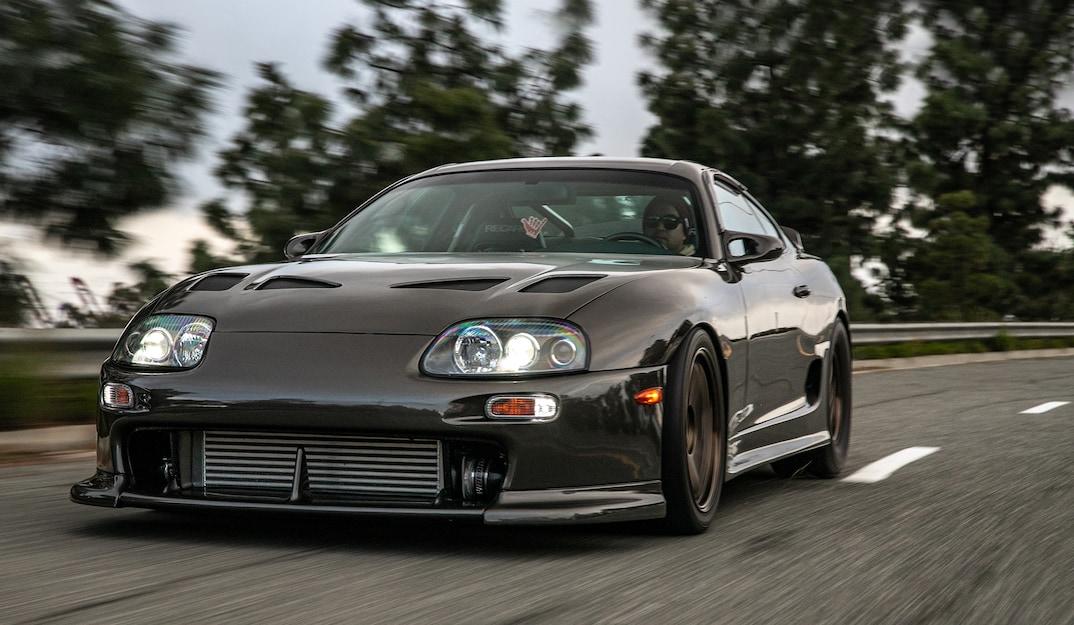
The car’s strong unibody construction provided an excellent foundation for high-performance modifications, while its long wheelbase contributed to stability during sustained drifts.
The factory Getrag V160/V161 transmission proved capable of handling significant power increases, making it a favorite among professional drift builders.
What truly set the MK4 Supra apart was its combination of bulletproof reliability and extreme performance potential.
The 2JZ-GTE engine’s overbuilt nature and sophisticated engineering made it an ideal platform for high-power drift builds.
While the car’s increasing value has made it less common in drift competitions, its influence on the sport and culture remains significant.
7. Chevrolet Corvette C5/C6
The Chevrolet Corvette, particularly the C5 and C6 generations, brought American muscle to professional drifting.
These cars combined lightweight construction with powerful V8 engines, creating platforms that excelled in high-speed drifting.
The LS-series engines found in these Corvettes became legendary for their combination of power, reliability, and tuning potential.
The Corvette’s unique features, including its rear-mounted transaxle and sophisticated suspension system, provided excellent weight distribution and handling characteristics.

The cars’ wide track width and low center of gravity contributed to stability during aggressive drifting maneuvers.
The readily available aftermarket support and relatively affordable maintenance costs made these cars attractive options for professional drift builds.
What made the Corvette platform particularly special was its ability to compete with and often outperform more traditional Japanese drift cars.
The combination of abundant torque from the LS engines and the cars’ sophisticated chassis dynamics created machines that could maintain sustained drifts while delivering spectacular performances.
The success of Corvettes in professional drift competitions helped legitimize American cars in a sport traditionally dominated by Japanese vehicles.
8. Nissan 350Z/370Z
The Nissan 350Z and its successor, the 370Z, carried forward the legacy of Nissan’s Z-car lineage while establishing themselves as formidable drift platforms.
These cars featured powerful naturally aspirated VQ-series V6 engines, excellent weight distribution, and rigid chassis designs that made them ideal for drift modifications.
The VQ35DE and VQ37VHR engines provided strong low-end torque and linear power delivery, perfect for maintaining controlled slides.
The Z-cars’ short wheelbase and wide trackwidth created agile platforms that excelled in technical drift courses.
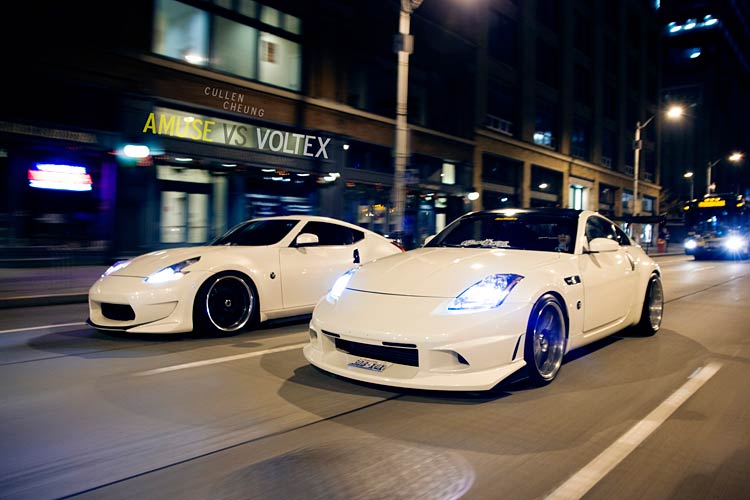
The sophisticated multilink suspension system offered excellent handling characteristics that could be enhanced through modification.
The cars’ strong aftermarket support allowed for extensive customization options, from simple bolt-on modifications to complete drift-spec builds.
What made these platforms particularly special was their accessibility and performance potential.
As modern interpretations of the classic sports car formula, they offered excellent build quality, reliability, and performance at relatively affordable price points.
Their success in professional drift competitions, particularly in Formula Drift, helped establish them as legitimate successors to earlier Japanese drift icons.
9. Ford Mustang (Various Generations)
The Ford Mustang, across multiple generations, has proven itself as a capable and exciting drift platform.
From the Fox Body to the modern S550 platform, Mustangs have combined powerful V8 engines with rear-wheel drive architecture to create machines well suited for drifting.
The availability of affordable parts and strong aftermarket support made these cars popular choices for both amateur and professional drift builds.
The Mustang’s evolution as a drift platform paralleled improvements in its chassis dynamics and power delivery.
While earlier generations relied primarily on brute force and mechanical simplicity, modern Mustangs feature sophisticated suspension systems and electronic aids that can be optimized for drift applications.
The Coyote V8 engine, in particular, has proven capable of producing significant power while maintaining reliability.
This high-revving engine, with its impressive torque delivery, is a favorite among drifters for its ability to sustain prolonged slides and maintain control during high-speed drifts.
What truly sets the Mustang apart is its ability to bring American muscle car character to drift competition.
The combination of abundant torque, robust construction, and increasing sophistication in handling dynamics created platforms that could compete effectively against purpose-built drift machines.
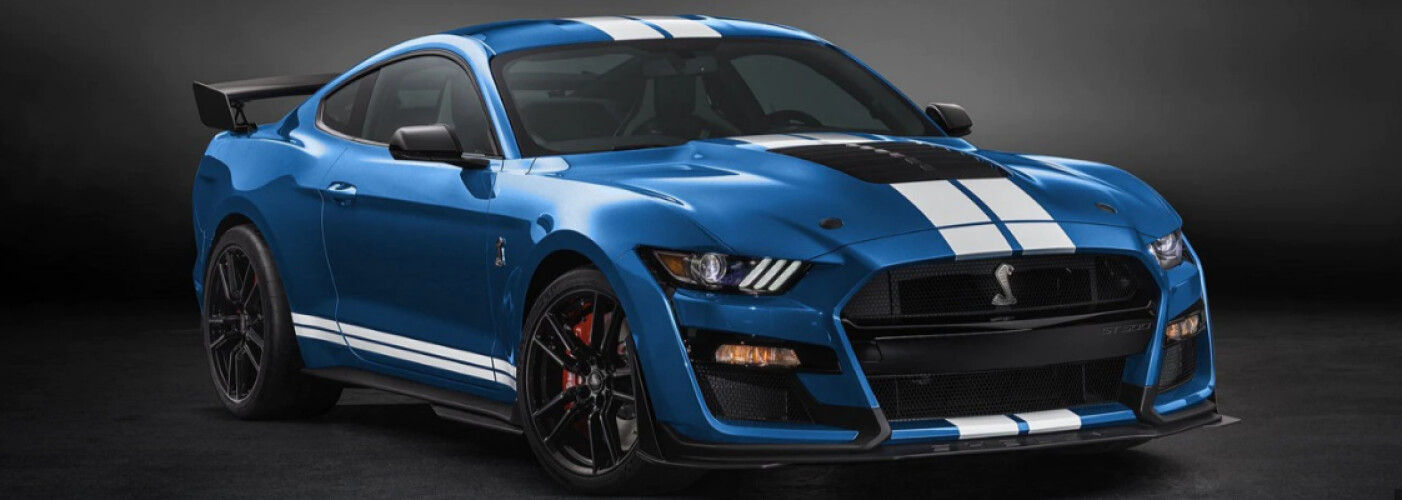
The success of Mustangs in professional drifting, particularly in series like Formula Drift, helped establish American muscle cars as legitimate contenders in the sport.
Drivers like Vaughn Gittin Jr. have showcased the Mustang’s potential by achieving significant success in competitive drifting, further solidifying its reputation.
One of the key advantages of the Mustang as a drift car is the strong aftermarket support.
Enthusiasts have access to a wide range of performance parts, including suspension upgrades, angle kits, and power adders like superchargers and turbochargers.
This extensive availability of parts allows drifters to tailor their Mustangs to their specific preferences and driving styles.
Additionally, the Mustang’s affordability and widespread availability make it an accessible option for those looking to get into drifting without breaking the bank.
The Mustang’s iconic design also adds to its appeal. The aggressive stance, distinctive front grille, and muscular lines make it a visually striking car that stands out on the track.
Its classic American muscle car aesthetics, combined with modern performance capabilities, create a unique and fascinating presence in the drifting world.
The Ford Mustang’s combination of powerful V8 engines, rear-wheel drive architecture, strong aftermarket support, and iconic design make it one of the best drift cars of all time.
Its ability to compete at the highest levels of drifting, along with its cultural significance and enduring popularity, ensures that the Mustang remains a legendary icon of drifting.
10. Lexus IS300/Toyota Altezza
The Lexus IS300 (known as the Toyota Altezza in Japan) represents a perfect blend of luxury car refinement and drift-ready dynamics.
Equipped with the legendary 2JZ-GE engine in naturally aspirated form, these cars provide an excellent foundation for drift builds.
The inline-six engine’s smooth power delivery and robust construction make it ideal for forced induction modifications, allowing enthusiasts to extract even more performance.
The IS300’s sophisticated chassis and suspension design, derived from its luxury car origins, provide excellent handling characteristics that can be optimized for drifting.
The car’s long wheelbase and balanced weight distribution contribute to stability during sustained drifts, while the independent suspension setup offers precise control and responsiveness.
The IS300’s rear wheel drive layout allows for easy initiation of drifts and smooth transitions between slides.
One of the key factors that make the IS300 particularly special is its combination of daily-driver practicality and performance potential.
These cars can be built into serious drift machines while retaining their comfort and reliability.
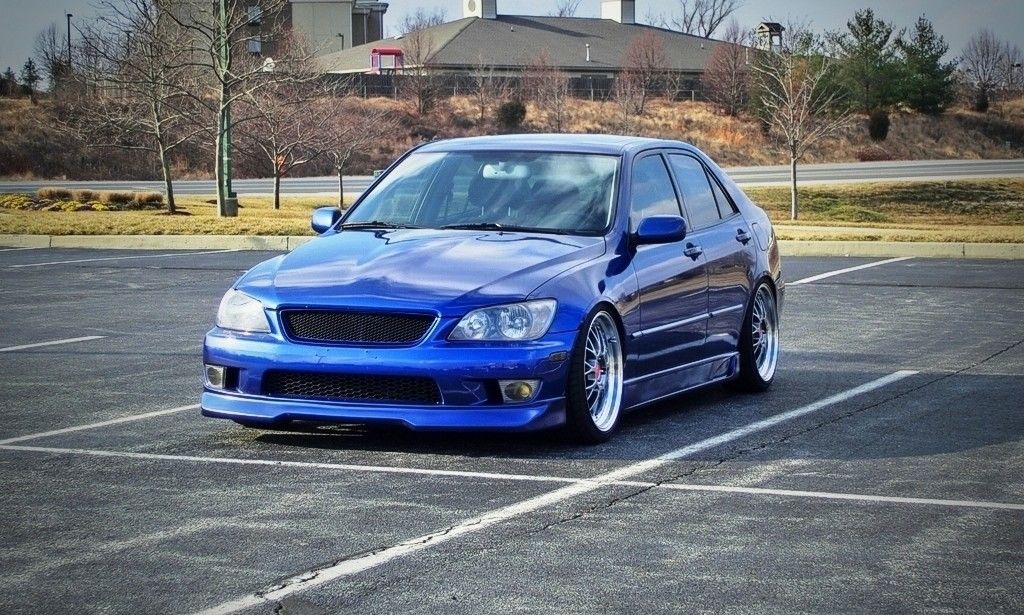
The platform’s spacious interior, comfortable seats, and advanced features make it a versatile option for those who want a drift car that can also serve as a practical daily driver.
The availability of parts from the larger Toyota/Lexus ecosystem makes these cars relatively easy to modify and maintain, further enhancing their appeal.
The IS300’s success in professional drift competition, particularly when equipped with modified 2JZ engines, has helped establish it as a legitimate alternative to more traditional drift cars.
Drivers like Daigo Saito have demonstrated the car’s potential by achieving significant success in competitive drifting, showcasing the IS300’s capabilities on the world stage.
The car’s robust construction and tuning potential make it a favorite among drift enthusiasts looking for a reliable and capable platform.
In addition to its performance and practicality, the IS300’s sleek and timeless design adds to its appeal.
The car’s sharp lines, aggressive front fascia, and distinctive headlights give it a unique and attractive appearance that stands out on the track.
The combination of luxury and performance makes the IS300 a versatile and desirable option for drifters.
The Lexus IS300/Toyota Altezza’s combination of luxury car refinement, drift-ready dynamics, robust engine, and practical features make it one of the best drift cars of all time.
Its influence on the drifting community and its enduring popularity among enthusiasts ensure that the IS300 remains a cherished icon of drifting.
11. Nissan 240SX (S14/S15)
The Nissan 240SX, particularly the S14 and S15 generations, represents the evolution of Nissan’s Silvia platform.
These cars were built upon the success of the S13, offering improved chassis dynamics, more sophisticated suspension systems, and updated versions of the SR20DET engine.
The S15, in particular, became legendary for its combination of aggressive styling and excellent handling characteristics.
The SR20DET engine continued to be a cornerstone of the 240SX’s appeal. This turbocharged 2.0-liter inline-four engine delivers robust and tunable performance, making it a favorite among drifters.
The SR20DET’s power delivery and reliability allow drivers to achieve and maintain high-speed slides with ease.
The engine’s potential for tuning and modification further enhances its appeal, allowing enthusiasts to extract even more performance from their cars.
The 240SX’s chassis and suspension design contribute to its exceptional handling and driftability.
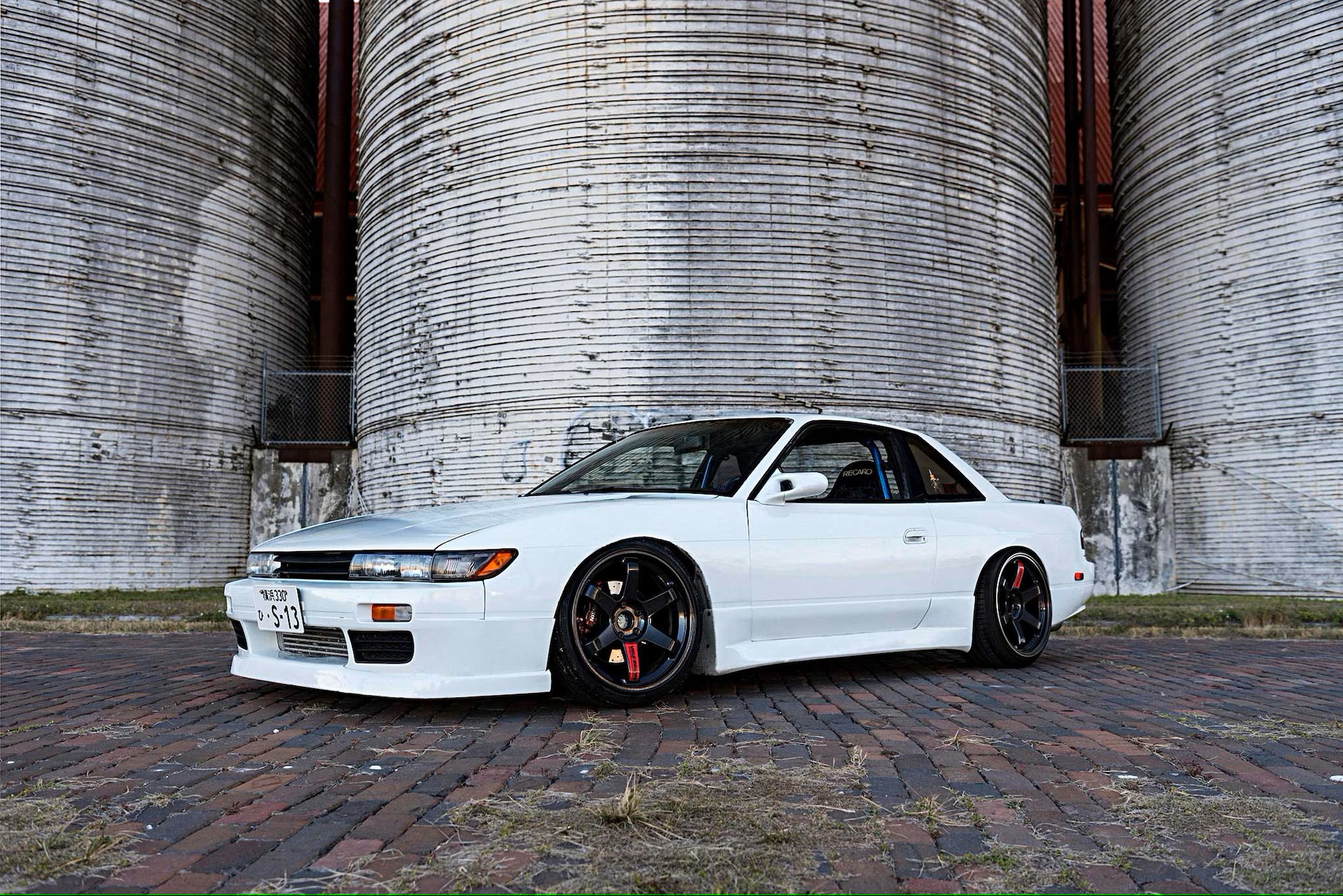
The car features a multi-link rear suspension setup, providing excellent control and stability during drifts.
The S14 and S15 generations also benefit from improved chassis rigidity, enhancing their performance and responsiveness.
The extensive aftermarket support developed for these platforms allows for virtually unlimited customization options, enabling drifters to tailor their 240SXs to their specific preferences and driving styles.
One of the standout features of the S15 is its aggressive and modern styling. The car’s sharp lines, distinctive front fascia, and aerodynamic design give it a visually striking appearance that stands out on the track.
The S15’s sleek and aggressive look has made it a favorite among drifters and car enthusiasts alike, further cementing its status as an iconic drift car.
The 240SX’s influence on the drifting community is evident in its widespread popularity and success in professional drifting competitions.
Drivers like Chris Forsberg have achieved significant success with the 240SX in series like Formula Drift, showcasing the car’s capabilities on the world stage.
The 240SX’s combination of performance, affordability, and aftermarket support has made it an accessible option for both amateur and professional drifters.
The Nissan 240SX (S14/S15)’s combination of robust engine, exceptional handling, aggressive styling, and extensive aftermarket support make it one of the best drift cars of all time.
Its influence on the drifting community and its enduring popularity ensure that the 240SX remains a legendary icon of drifting.
12. Toyota JZX100/JZX110
The Toyota JZX series, particularly the JZX100 Chaser/Mark II/Cresta and JZX110 variants, represents the ultimate evolution of the Japanese performance sedan platform.
These cars combine luxury car comfort with drift-ready dynamics, powered by the legendary 1JZ-GTE engine.
The turbocharged inline-six engine shares many characteristics with its larger 2JZ sibling, including exceptional durability and tuning potential.
Despite their substantial size and weight, the JZX series platforms prove remarkably capable as drift machines.
The long wheelbase provides excellent stability during high-speed drifts, while the sophisticated suspension system can be modified to deliver precise handling characteristics.
The availability of manual transmission variants, particularly in the Japanese market, makes these cars especially desirable for drift conversion.
One of the key factors that make the JZX series particularly special is its unique combination of luxury car presence and drift car performance.
These platforms demonstrate that large, comfortable sedans can be transformed into serious drift machines without sacrificing their fundamental character.
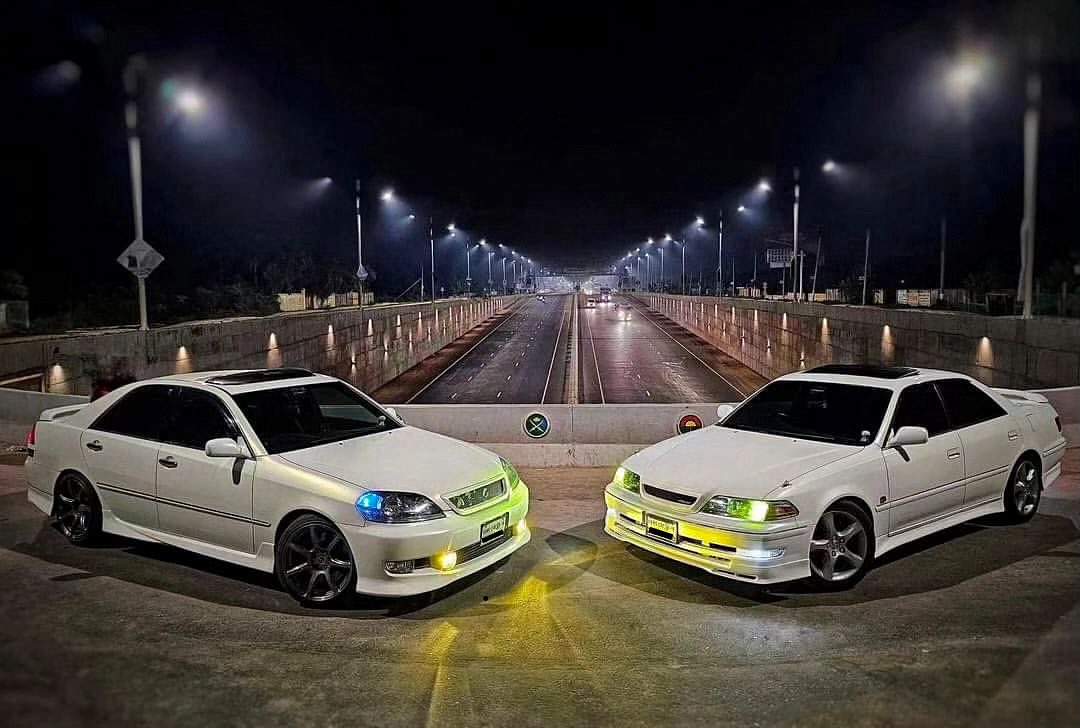
The JZX100, for example, features a multi-link suspension setup and a robust chassis, providing a solid foundation for drift builds.
The 1JZ-GTE engine’s smooth power delivery and tuning potential make it an ideal choice for enthusiasts looking to achieve impressive performance.
The JZX series’ influence on the drifting community is evident in its success in professional drifting competitions and its dedicated following among drift enthusiasts.
Drivers like Daigo Saito have showcased the JZX series’ potential by achieving significant success in competitive drifting, further solidifying its reputation as a capable and versatile drift platform.
The car’s robust construction and tuning potential make it a favorite among drift enthusiasts looking for a reliable and capable platform.
In addition to its performance and practicality, the JZX series’ sleek and timeless design adds to its appeal.
The car’s sharp lines, distinctive front fascia, and elegant styling give it a unique and attractive appearance that stands out on the track.
The combination of luxury and performance makes the JZX series a versatile and desirable option for drifters.
The Toyota JZX100/JZX110’s combination of luxury car refinement, drift-ready dynamics, robust engine, and practical features make it one of the best drift cars of all time.
Its influence on the drifting community and its enduring popularity among enthusiasts ensure that the JZX series remains a cherished icon of drifting.
Also Read: 10 Pickup Trucks With Next-Gen Off-Road Capabilities

